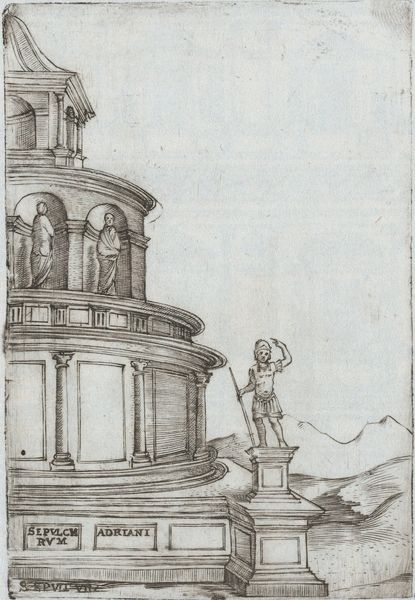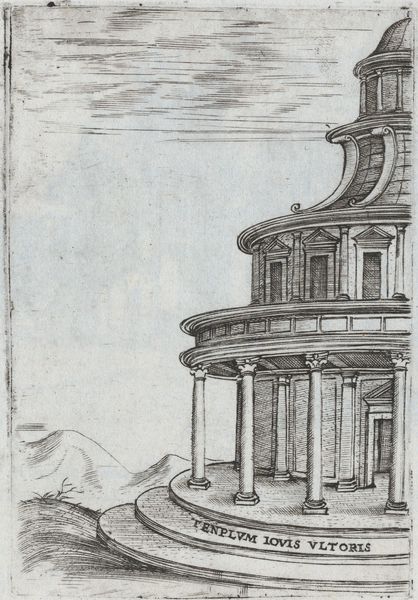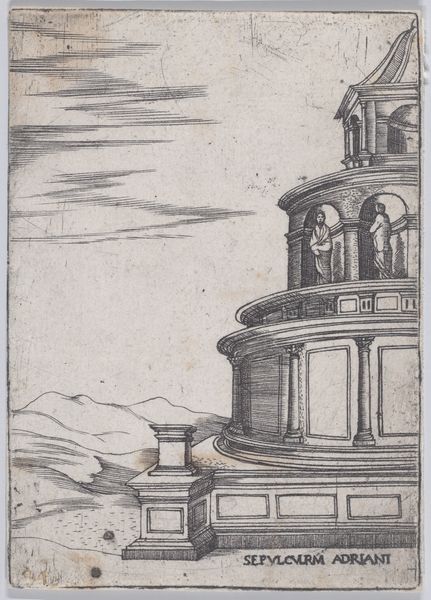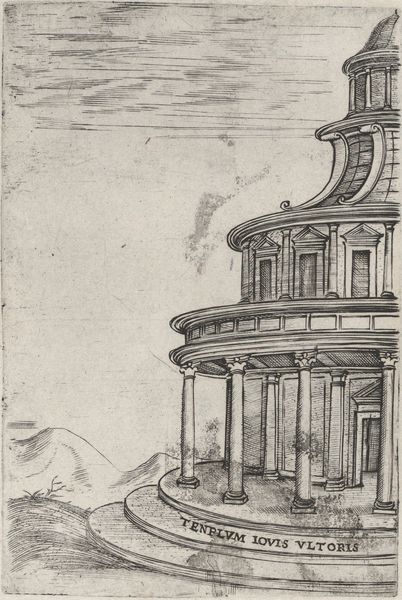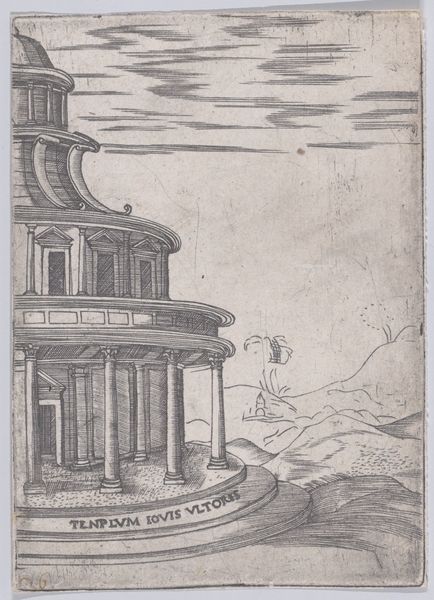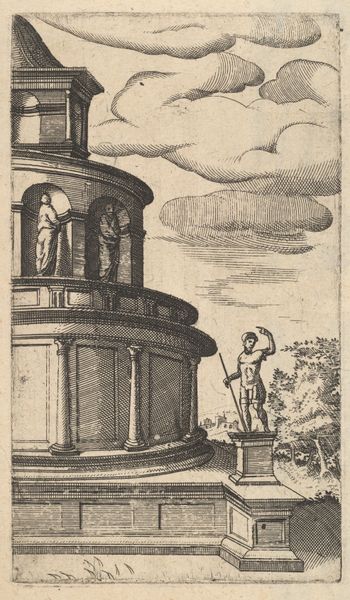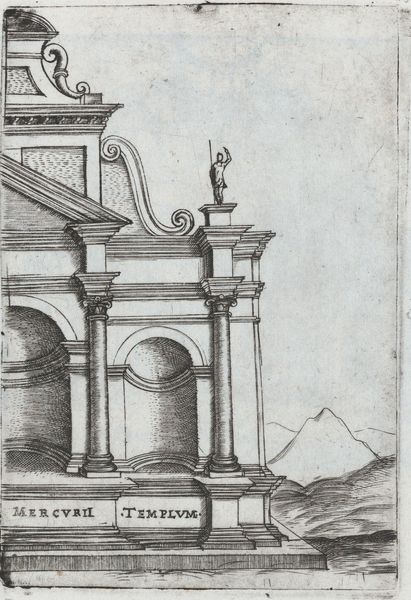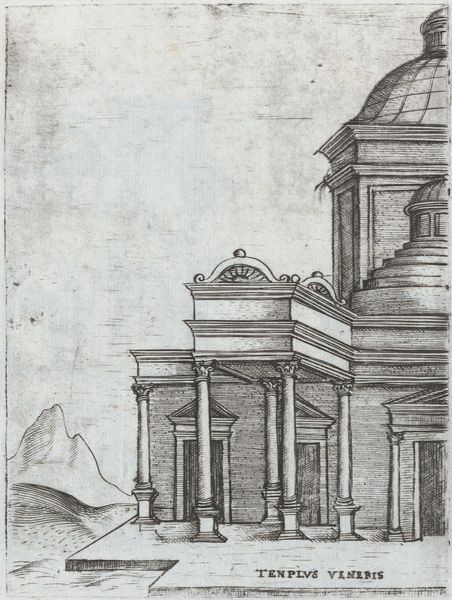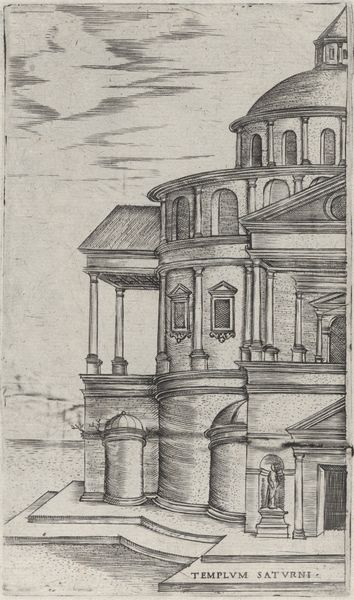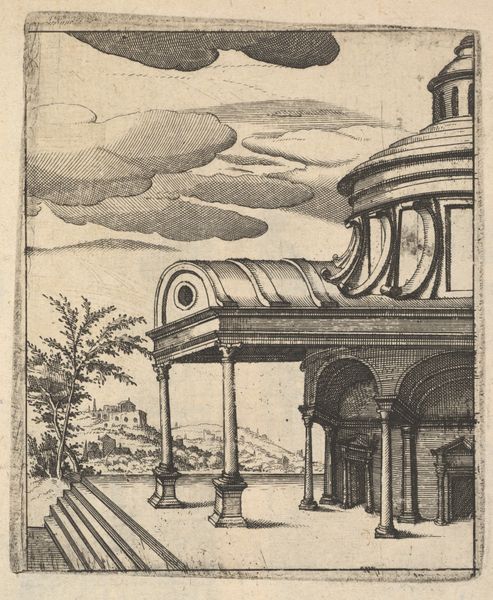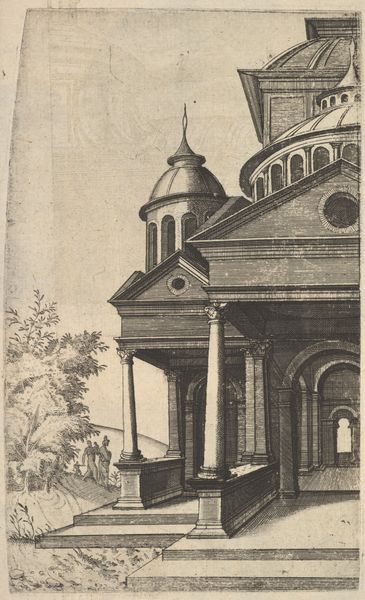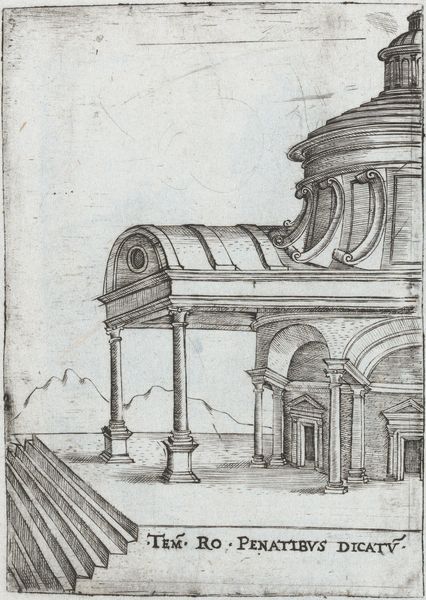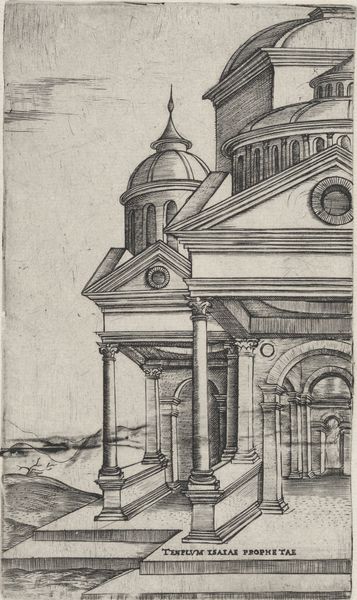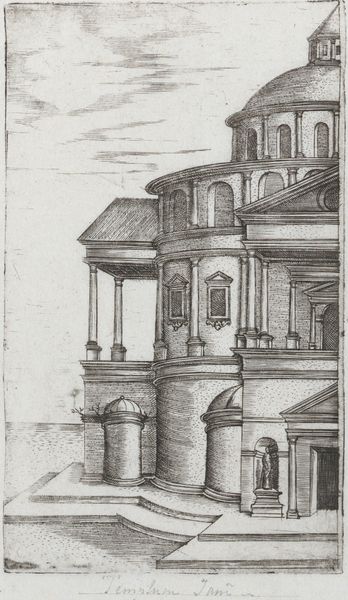
Sepulchrum (sic) Adriani, from a Series of 24 Depicting (Reconstructed) Buildings from Roman Antiquity 1530 - 1550
0:00
0:00
drawing, print, engraving, architecture
#
drawing
# print
#
line
#
history-painting
#
italian-renaissance
#
engraving
#
architecture
Dimensions: Sheet: 13 3/8 × 9 5/16 in. (34 × 23.6 cm)
Copyright: Public Domain
This print, depicting the reconstructed Tomb of Hadrian, was made by an anonymous artist and is part of a series of twenty-four prints showing buildings from Roman antiquity. It's important to consider what these images of reconstructed monuments meant to the people who viewed them. What was the public role of such images? Artists, architects, and their patrons had a fascination with the architecture of ancient Rome. The visual codes of classical architecture carried an enormous cultural prestige, and the revival of these forms served as a reminder of a glorious past. We should ask ourselves, whose glory was this? The tomb of Hadrian, or Castel Sant'Angelo as it is now known, became a papal residence in the 14th century, and so the image also has relevant institutional histories. Historians can look at drawings, treatises, and other visual representations of these monuments. They can examine how classical architecture was deployed in the service of social and political ideologies. Art is contingent on social and institutional context.
Comments
No comments
Be the first to comment and join the conversation on the ultimate creative platform.
